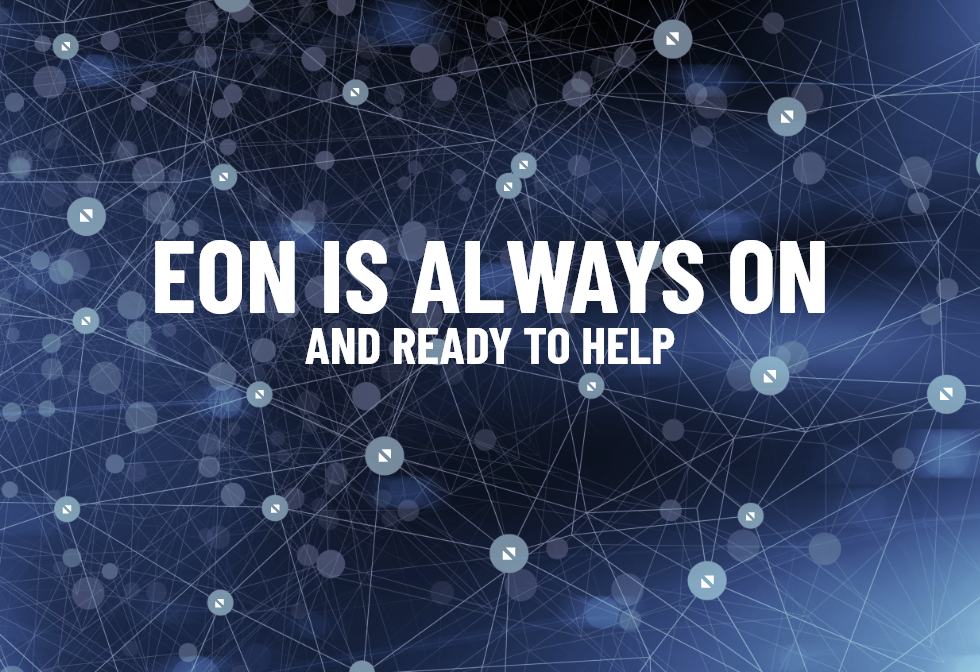Breast Screening & Incidental Breast Lesions
Identify.
Capture.
Track.

Breast cancer is the most common cancer in the U.S. Approximately 1 in 8 women will develop it in their lifetime. Fortunately, breast cancer can usually be detected and treated in the early stages when the survival rates are very high.
The Eon Patient Management (EPM) Breast package is a comprehensive, one-of-a-kind platform designed for facilities to manage both breast screening patients and patients with incidentally identified breast lesions. EPM is the only market-available solution to identify patients with incidental breast findings from imaging exams outside of the breast—with over 95% accuracy—allowing you to add this previously overlooked patient population to your existing breast program. Additionally, EPM automates the expected next exam of patients in the low-risk categories (BI-RADS 1, 2 and 3) and triages higher-risk patients (BI-RADS 4A/4B/4C and 5) for physician review. One solution, one dashboard.
3.5 million
American women living with breast cancer
15%
of all new cancer cases each year
The Eon Advantage
One Comprehensive Breast Program Solution
Breast Cancer Screening
The American Cancer Society (ACS), the United States Preventive Services Task Force (USPSTF), and many other groups recommend regular breast screening for women based on age and risk factors. EPM Breast accommodates and integrates breast imaging modalities including 2D and 3D mammography, digital breast tomosynthesis (DBT), ultrasound, lymphoscintigraphy, PET-CT, and MRI. As required, breast screening results are classified and have recommended follow-up based on the American College of Radiology (ACR) BI-RADS:
| BI-RADS | Definition and Follow-up |
|---|---|
| 0 | Incomplete exam |
| 1 | Negative, routine screening |
| 2 | Benign, routine screening |
| 3 | Probably benign, short interval (6-month) follow-up mammogram |
| 4 (A,B,C) | Suspicious, tissue sampling if radiologist advises |
| 5 | Highly suggestive of malignancy, tissue sampling |
| 6 | Known, biopsy proven malignancy, surgical excision when clinically appropriate |
EPM Breast can automate the follow-up for BI-RADS 1, 2 and 3, while sending your higher-risk patients (BI-RADS 4 and 5) directly to physician review. This means 97.5% of patients can have automated routine follow-ups entered, which frees up valuable FTE time so they can focus on those needing more advanced care.
Incidental Breast Identification
For breast abnormalities discovered outside breast screening programs, EPM Breast uses Eon’s proprietary Computational Linguistics (CL) data science models to identify incidental breast nodules, masses, and other findings documented in an imaging report. The EPM Breast CL model has an accuracy rate over 95% to maximize your program’s patient capture rate, and EPM allows your program to manage patients with incidental findings on the same dashboard as breast screening patients.
Management of patients with incidental breast findings is vital to any comprehensive breast program, as only about 50% of incidental breast lesions are found in women who are eligible for breast cancer screening. Of the remaining incidental findings, about 40% are found in women either too young or too old to be eligible for screening, in those who are not participating in a screening program, and about 10% are found in men. EPM Breast is the only solution that identifies patients with incidental breast findings, automates the next step of a diagnostic mammogram, and offers the full tracking necessary for a screening program so patients don’t fall through the cracks.
EPM Breast was designed for a total breast program:
- Does not disrupt radiology workflow or require change in radiologist interpretation or documentation
- Extracts finding size, number of findings, laterality of findings, and location of largest abnormality
- Automates tracking for all patients and all BI-RADS in one dashboard
- Listens for pertinent follow-up exams, including unscheduled and emergency
- Automates FTE workflow with proprietary follow-up logic
- Calculates and sends custom, periodic adherence reports on request
- Uses proprietary logic to automate patient and provider communication
EPM Breast also enables compliance with MQSA and the mammography EQUIP requirements including technologist review, equipment QA, reporting, and preparation for FDA audits.
Early Detection Dramatically Improves Patient Survival:
98.9%
5-year survival rate when findings are localized
20%
Reduction in breast cancer mortality from screening


“Breast screening has proven to be a huge life-saver and is the model for screening programs of other disease states. Our CL models identify women with breast abnormalities who may be outside traditional breast screening programs, as well as those rare male breast cancer patients—they need follow-up care and attention as well. EPM technology allows breast teams to focus on the follow-up care of critical, high-risk patients as we work together to fight breast cancer.”
What’s In It For You?
A breast cancer screening and incidental management solution for everyone.
Eon Breast
Features and Attributes
Identification
CL consists of industry-best data science models that understand text and the linguistic structure of medical English similar to the human brain. The Eon CL Breast model identifies incidental breast findings in radiology reports with over 95% accuracy. As a part of EPM Breast, CL can:
- Identify a mass, nodule or other abnormality in non-breast imaging reports that have a measurement
- Extract finding size, number of findings, laterality of findings, and location of largest abnormality
- Identify enlarged axillary, interpectoral, supraclavicular, or mediastinal lymph nodes if no other measured breast abnormality is found
Longitudinal Tracking
EPM’s sophisticated business logic implements the evidence-based guidance needed to manage patient follow-up to increase adherence and maximize the value of your program:
- Automate reminders for exams and procedures so your breast team instantly know who’s been scheduled and who missed their exams
- Prioritize patients who are high-risk (BI-RADS 4A/B/C and 5) and need immediate care coordination, while automating follow-up for the low-risk (BI-RADS 1, 2 and 3) patients
- Use Eon’s proprietary “Follow-Up Listener” to automatically track patients and identify those patients who have had their exams or procedures and who is at risk for no follow-up
Analytics
Track trends and measure growth—with no setup required—to glean real-time insight into breast program analytics.
View key metrics including volumes and MQSA/EQUIP statistics
- Exam distributions (screening, diagnostics, tissue sampling, etc), including productivity per radiologist and per technologist; breast lesion size distribution; BI-RADS classification by facility and by interpreting radiologist, including callback statistics; technologist case review statistics; equipment QA oversight.
Increase insight into patient follow-up rates and the impact of your breast screening program
Measure outcomes with pathology statistics
- Tissue sampling broken down by modality and method (core, fna, surgical) by physician; Core Biopsy Accreditation audit per biopsying physician.
- Biopsy proven accuracy statistics by interpreting radiologist: pathology distribution for all positive screening cases; TP, TN, FN, FP, PPV, and NPV both for screening and diagnostic exams; tumor staging (0 / I/ II / III / IV, node status).
Increase patient capture, drive downstream revenue, and prove program ROI/impact with real-time analytics
Communication
Automate, track, and archive communication from one convenient location. Get all documentation done from an easy-to-use dashboard.
- Use proprietary logic to automate patient and provider communication
- Create unlimited custom letters with drag and drop tools
- Track who has been contacted, when they were contacted, and how they contacted
- Consolidate all contact information and always know who and when to contact—with the right information at your fingertips
Best-In-Class Solution and Support

From security, to implementation, to client support—Eon’s got you covered with:
- HIPAA, HITECH Act, and SOC 2 Type II compliance
- A cloud-based, AWS-hosted solution that requires no new hardware or on-premise maintenance
- No workstation software loads
- VPN connectivity to a HL7 feed from the EHR to AWS, can also include bi-directional HL7 integration (EPM to EHR) for integration of patient and provider letters in the EHR
- Software updates and upgrades seamlessly rolled out free of charge
- Multi-site deployment for hospital systems and IDNs with multiple facilities
- Unlimited user access to the application with no additional cost
- Quick implementation with ongoing client support
- Less than 1-minute customer support response time
Ready to identify, track, and improve outcomes for patients at risk for future disease? Get started with your demo and ensure no patient falls through the cracks.